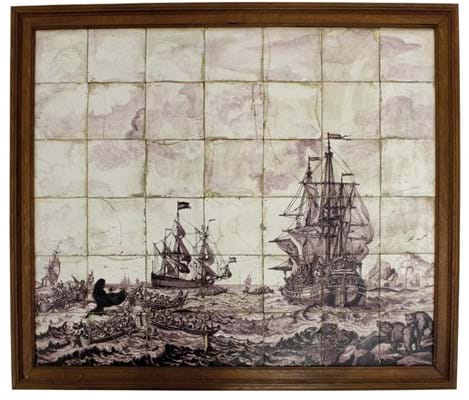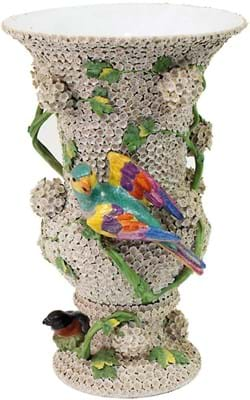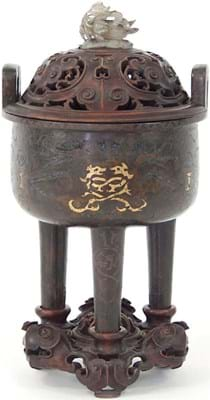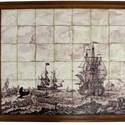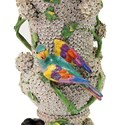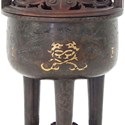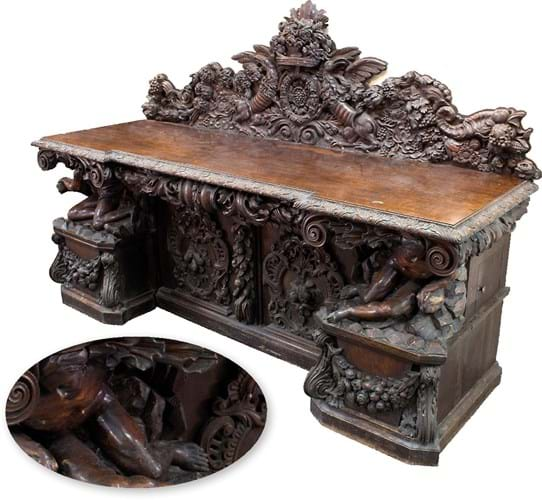Topping the two-day Gloucestershire sale was a fine Maltese commode with a family provenance going back 150 years.
Illustrated and described on the news pages of last week’s ATG (No 2311), this fine example of Mediterranean marquetry tripled the estimate, going at £28,000 to a Maltese dealer buying for his own collection.
As with the German, Dutch and Chinese items which sold so well, the commode came from the seemingly inexhaustible stock that remains in English country homes.
The ceramics star was the 19in (49cm) tall Meissen Schneeballen vase decorated with birds and May blossom illustrated on this page.
Dating to the early years of the 20th century, it had some professional restoration to a parrot’s beak and some chipping to a hoopoe’s crest, but was in overall good condition and it doubled the mid estimate, selling to an ‘international bidder’ at £8500.
Market freshness
A ‘probably Dutch’ 18th century manganese tiled tableau of a whaling scene was a more unusual object. Comprising 42 square tiles, the framed 3ft x 2ft 6in (91 x 77cm) scene was estimated at £600-800 on account of its condition.
“Many of the tiles were cracked or crazed,” said auctioneer Thomas Jenner-Fust. “But look at the image and the detail of the whalers and the bears looking on in the foreground.”
“With the weakness of the pound, more and more pieces are going abroad,” Jenner-Fust added.
However, a prime candidate for export stayed in the UK – at least for the time being.
This was the 12in (30cm) high archaistic Chinese gilt bronze ding shown above, estimated at £2000-3000.
“In my opinion, the actual vessel was quite early Ming and the carved wood stand and cover [with jade finial] later, 18th or 19th century,” said Jenner-Fust. “It appeared that a number of bidders thought so too”.
The usual interest from the Far East emerged but a UK specialist outbid them all at £20,000.
Home wins among the furniture also contributed to the £223,000 total at the sale where 88% of the 1000-plus lots got away.
“Aftersales pushed the selling rate up to 90%,” said Jenner-Fust. “That’s not unusual for us. We have overwhelmingly private vendors who want their consignments to sell and, unlike many trade vendors, accept realistic reserves and estimates.”
An example was a pair of 9ft (2.75m) 17th century oak columns.
“When we saw them in the house we were valuing they still had the Christie’s South Kensington numbers on them,” said Jenner-Fust.
At CSK in July 2014 the columns had sold at £2000. The vendor accepted a £1500-2000 estimate, but this time the columns sold to a private UK buyer at £3500.
English interest
The top-priced English furniture lot was an unusual mid to late-19th century carved oak sideboard, in the style of Gerrard Robinson of Newcastle .
“I’d never seen another like it,” said Jenner-Fust. “It was intricately carved and included figures to each plinth rather like Atlas. There was a feel of the Black Forest about it but the general consensus was that it was English. Fully restored, it would look a million dollars.”
Pitched at £800-1200, it attracted interest from the US but stayed in the UK after selling at £3800.


